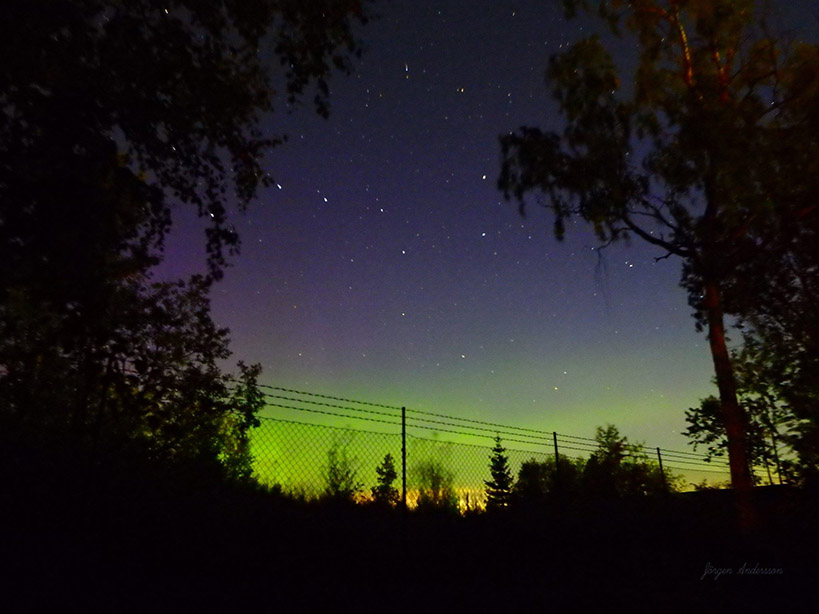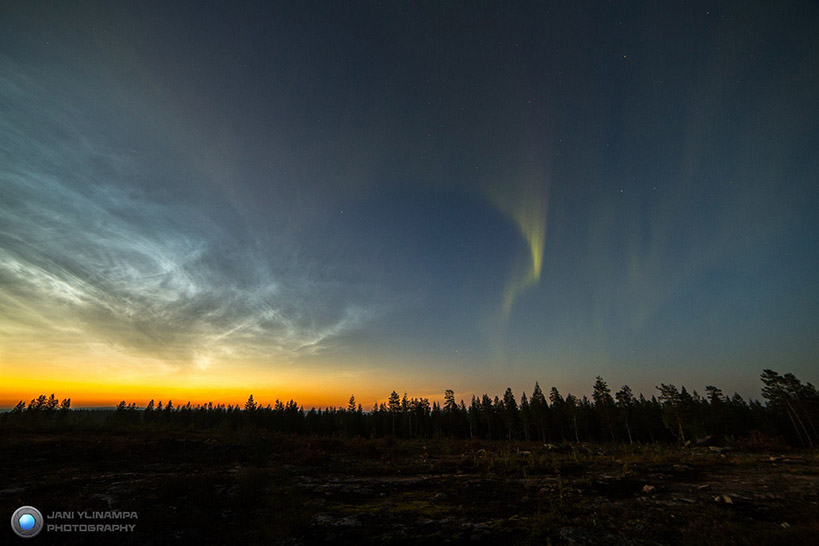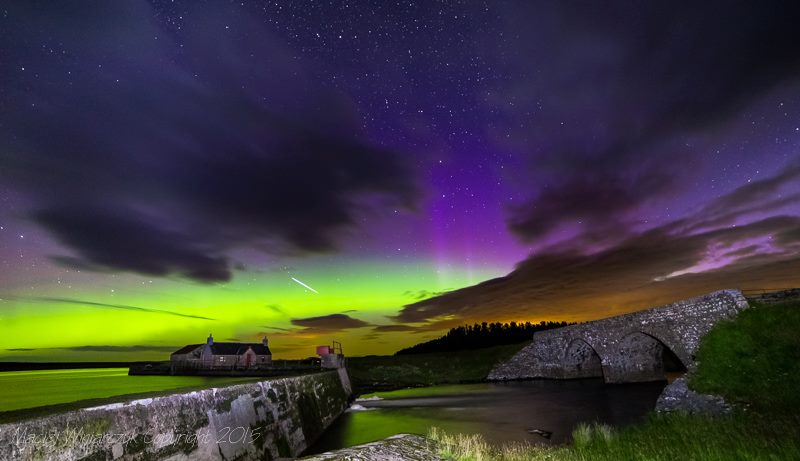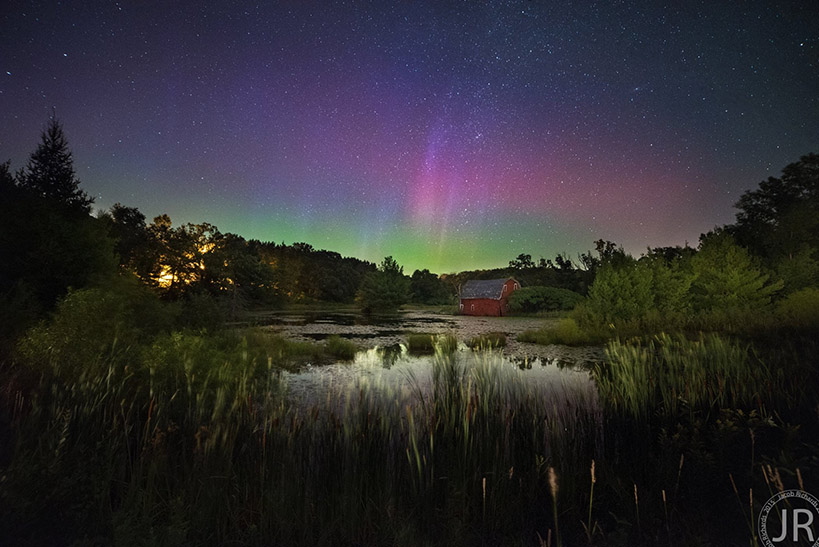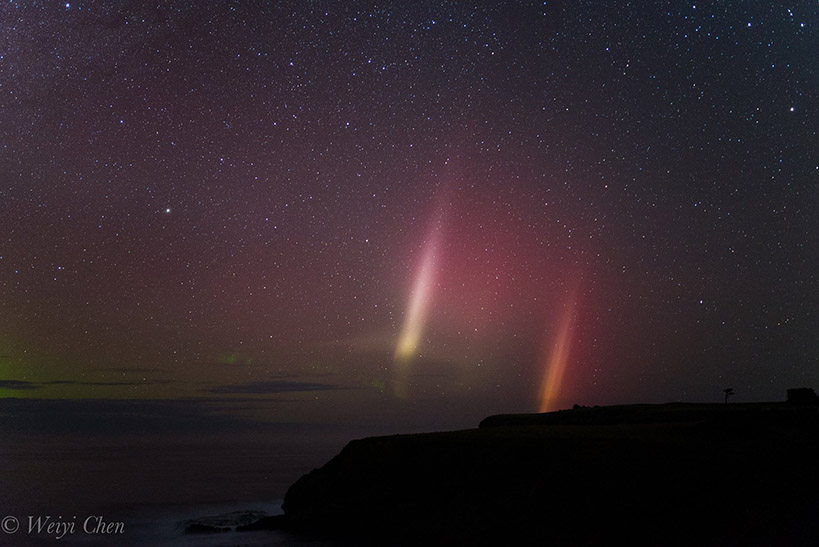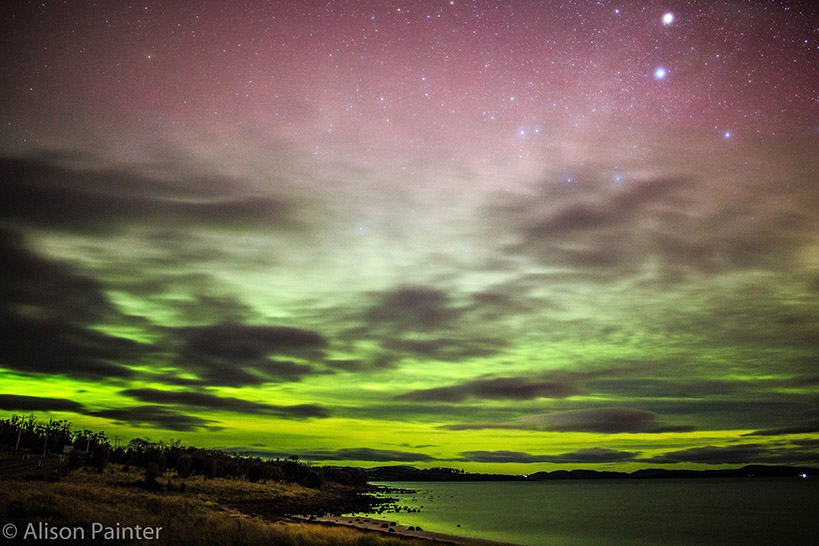Geomagnetic unrest, more coronal holes
Monday, 17 August 2015 15:09 UTC
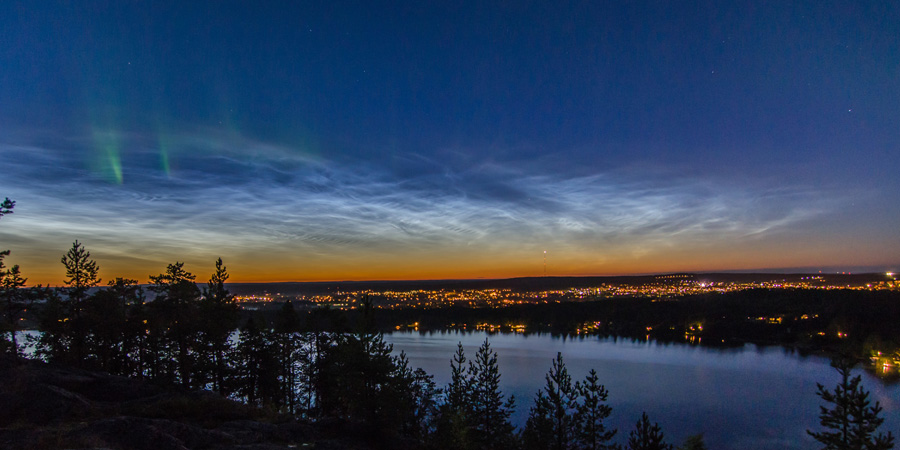
Geomagnetic conditions continued to be at active to minor storm levels during the past 24 hours thanks to waning CME effects and the effects of a coronal hole solar wind stream. Aurora activity has been elevated for three straight days now and many sky watchers around the world managed to capture the Aurora Borealis or the Aurora Australis. Keep on reading for a couple of images and videos made during the past few days from all around the world.
Videos: William Briscoe (Knob Lake, AK, USA)
Video: Marcel de Bont (Skellefteå ,Sweden)
Image: Christian Hering-Junghans (Alberta, Canada)
Image: Reuben van Buuren (Twizel, New Zealand)
Image: LuAnn Griffin (Michigan , USA)
Image: Jüri Voit (Estonia)
Image: Rolf Arne Aune (Muruvik , Norway)
Image: Stephanie Dennison (Tasmania, Australia)
Image: Jörgen Norrland Andersson (Sweden)
Image: Zachary Hargrove (Bismarck, North Dakota, USA)
Image: Russell Wiltshire (Port Phillip Bay, Australia)
Image: Mike Lufholm (MN, USA)
Image: Zack Splaine (Alberta, Canada)
Image: Jani Ylinampa (Rovaniemi, Finland)
Image: Alec Jones (Holy Island, Northumberland, UK)
Image: Maciej Winiarczyk (Loch More, Caithness ,Scotland)
Image: Stephen Hinde (Scotland)
Image: Shane Hardy (Kinross, Loch Leven, Scotland)
Image: Jacob Richards (Zimmerman, Minnesota, USA)
Image: Kathleen Wolleat (Gordon, Wisconsin, USA)
Image: Weiyi Chen (Tasmania, Australia)
Image: Alison Painter (Dunalley beach, Tasmania, Australia)
Coronal holes
More good news for high latitude sky watchers: the show will go on! Two more coronal holes can be seen on SDO imagery right now. One of those coronal holes is a large coronal hole on the Sun's northern hemisphere and it is facing Earth right now. Another high speed solar wind stream could hit our planet within the next 48 to 72 hours and could very well cause more periods where we reach the minor G1 geomagnetic storm threshold.
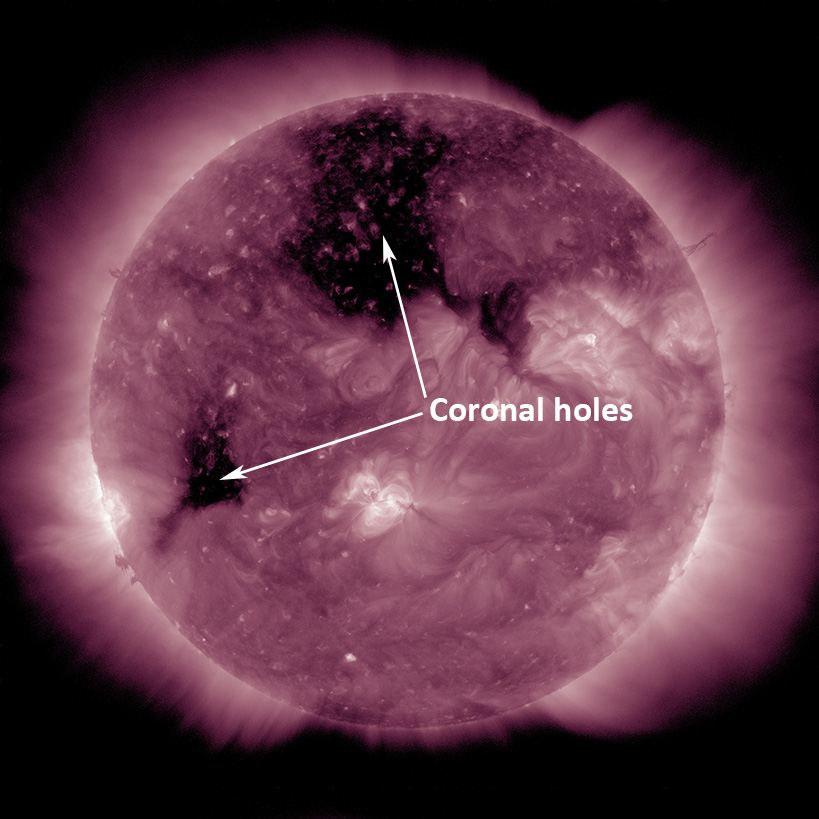
Image: SDO/AIA image in the 211 Angstrom wavelength showing two coronal holes.
Header image: Aurora Borealis and noctilucent clouds as captured by SpaceWeatherLive admin Marcel de Bont.
Thank you for reading this article! Did you have any trouble with the technical terms used in this article? Our help section is the place to be where you can find in-depth articles, a FAQ and a list with common abbreviations. Still puzzled? Just post on our forum where we will help you the best we can!
Latest news
Latest forum messages
Support SpaceWeatherLive.com!
A lot of people come to SpaceWeatherLive to follow the Sun's activity or if there is aurora to be seen, but with more traffic comes higher server costs. Consider a donation if you enjoy SpaceWeatherLive so we can keep the website online!

Space weather facts
| Last X-flare | 2025/05/14 | X2.7 |
| Last M-flare | 2025/05/24 | M2.2 |
| Last geomagnetic storm | 2025/05/17 | Kp6+ (G2) |
| Spotless days | |
|---|---|
| Last spotless day | 2022/06/08 |
| Monthly mean Sunspot Number | |
|---|---|
| April 2025 | 140.6 +6.4 |
| May 2025 | 73.1 -67.5 |
| Last 30 days | 84.8 -31 |






